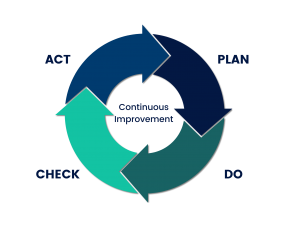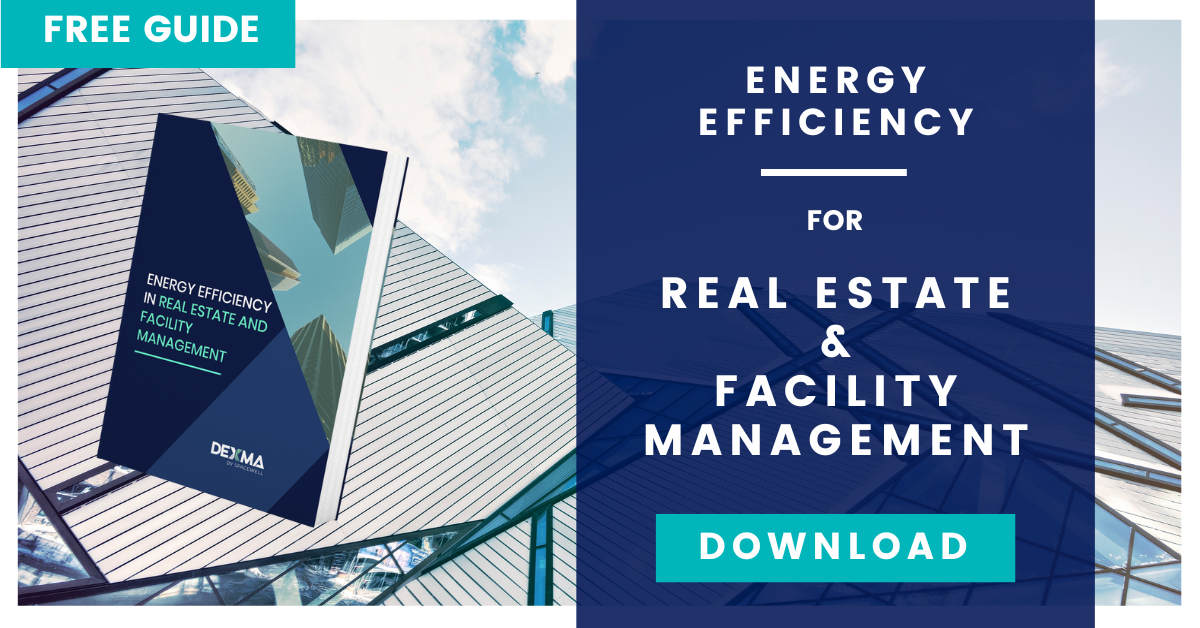If you are responsible for managing a large portfolio of buildings – or a single building with different needs across floors and users – Energy Efficiency is definitely a term you’ve heard before. But do you already have an energy efficiency strategy implemented for your buildings? Are your buildings efficient right now?
Discover the secrets to getting the most out of your Energy Management strategy in Real Estate. Keep on reading to know more.
Let us remind you that the journey towards energy efficiency isn’t a sprint.
Before you start implementing actions, you first need to take a wider look into your current situation:
- How much energy do you consume?
- How does that compare to other facilities?
- What part of that energy usage is essential and what isn’t?
This is also valid if you implemented efficiency measures in the past, but you’re no longer seeing good results. Why have things changed? How can you solve it?
If you want to be efficient, you need to consider energy as part of your wide business strategy and take a long term approach. Of course, you’ll have short term goals to monitor progress and cost reductions, but the best approach for Energy Management is based on Continuous Improvement.
Continuous Improvement in Energy Management for Real Estate, What Does It Really Mean?
The idea behind continuous improvement is that small changes over time have a bigger impact than a one-off radical change. It is a process to identify errors and successes progressively as part of the day to day job, documenting them throughout and implementing “small” changes and solutions.
In order to identify such “small” and regular solutions in energy management, you can implement measures such as real time monitoring or periodic reporting.
Before you continue reading, you need to consider if you have the capacity in-house to carry on an energy management plan in your building portfolio. Or if you need to hire an external professional instead.
In case you have your own energy management team, we recommend you this free guide for Real State & Facility Management companies. You will find out how to analyse energy consumption in multi location, how to detect potential savings, and different energy management tools, among other tips.
If you need external expert advice, we have a long list of Partners who are willing to lend you a hand in the process of implementation of your Energy Efficiency Strategy. Check them here.
Below you can find 3 key actions you can carry on as part of the “Continuous Improvement” approach to Energy Management in Real Estate and their benefits:
1. Real Time Energy Monitoring of your Building Portfolio
Real-time monitoring provides important information to help you analyse peaks of consumption, potential anomalies, and how much your building consumes when it’s empty (also known as passive consumption), among others.
As part of the continuous improvement process, if you discover that your building consumes a lot of energy overnight, you may want to review it. For example, are appliances being left on when employees leave? Are windows left open, impacting your temperature sensors and triggering your automatic heating system?
These are only two examples, and you may think of many more in your own building(s).
By monitoring regularly, you can identify such problems and find a solution quick enough. Whether that is educating the building users about energy consumption, automating further elements such as light or power in specific areas.
If you wait for your energy audit once a year, imagine how much energy you will be wasting in the meantime.
2. Periodic Energy Reporting for Real Estate Professionals
Real-time data is extremely useful for energy managers and facility managers, but not everyone across the business needs that level of detail.
For those people, whether you are reporting to your board members, to your team or to the overall company, periodic reporting is an excellent way to briefly show progress, achieved goals and comparison between similar periods of time.
Also, for you as a Real Estate professional, regular reporting will help you evaluate if the actions you’re taking are proving useful. Furthermore, you’ll be able to compare to a similar time before you started your energy efficiency strategy.
Energy Management Systems (EMS) such as the DEXMA Platform have easy-to-use tools for reporting. You can choose the important information you want to show and collate it quickly. Besides comparing data, you can also track information such as the sites with the highest savings potential, which will help you focus your efforts as part of your energy strategy.
3. Demonstrating Savings linked to Energy Efficiency Investment
The purpose of an energy efficiency strategy is to consume less energy and be more sustainable, but also (or sometimes primarily) to reduce costs for your organisation.
Your organisation may have invested (or is thinking about investing) money in energy management of its building portfolio by acquiring an energy management software or undergoing building improvement in your facilities.
The initial investment may be large, but by implementing “Continuous Improvement Measures”, further fixes won’t cost that much. You will avoid extra investment in the future, as well as a faster return on investment (ROI).
Once you’ve made an investment effort in your building portfolio, continuous improvement measures are like preventive maintenance: review and fix any potential issues before something breaks for good.
As an essential part of continuous improvement is documenting and reporting, you’ll also be able to show the numbers to demonstrate savings and ROI.
Continuous Improvement and International Energy Efficiency Certifications
One thing you maybe didn’t know about continuous improvement in Energy Efficiency is that it is the basis of many international recognised standards for buildings. For example, both the ISO 50001 Energy Management Certification and EMAS Environmental Certification follow the continuous improvement process, or what in management is known as the Plan-Do-Check-Act (PDCA) or Deming Wheel.
Such Certifications cannot be obtained unless a continuous improvement process is implemented in an organisation and clearly documented.
Specific Building Certifications such as BREEAM and LEED have a wider range of criteria. But they also measure your “Continuous Improvement” processes as part of the certification requirements. You can read more about these certifications here.
Regardless of your interest in achieving an energy management certification right now, implementing continuous improvement as your methodology will make your life easier on a day-to-day basis to manage your energy.
The Role of Technology in your Continuous Energy Improvement Process
After reading this article, are you already thinking about implementing this model or adapting yours to achieve energy efficiency improvement in your building portfolio? How can technology help?
Technology can take on some of the most tedious tasks. No need for you to spend time comparing your consumption daily, weekly or monthly. Or manually preparing progress reports and graphics. The software will do it for you, so you can focus on more important things such as the changes and solutions to implement.
If you don’t have an EMS yet, why not taking a look at what the market has to offer? There are solutions such as the DEXMA Platform which can help you manage large amounts of information, alert you of problems, suggest savings and monitor 24/7 data. Another positive? The set-up process is fast, secure, and you can have the support of our experts.
If you’re thinking about acquiring an EMS, and you’re unsure of where to start, check this article for guidance.





